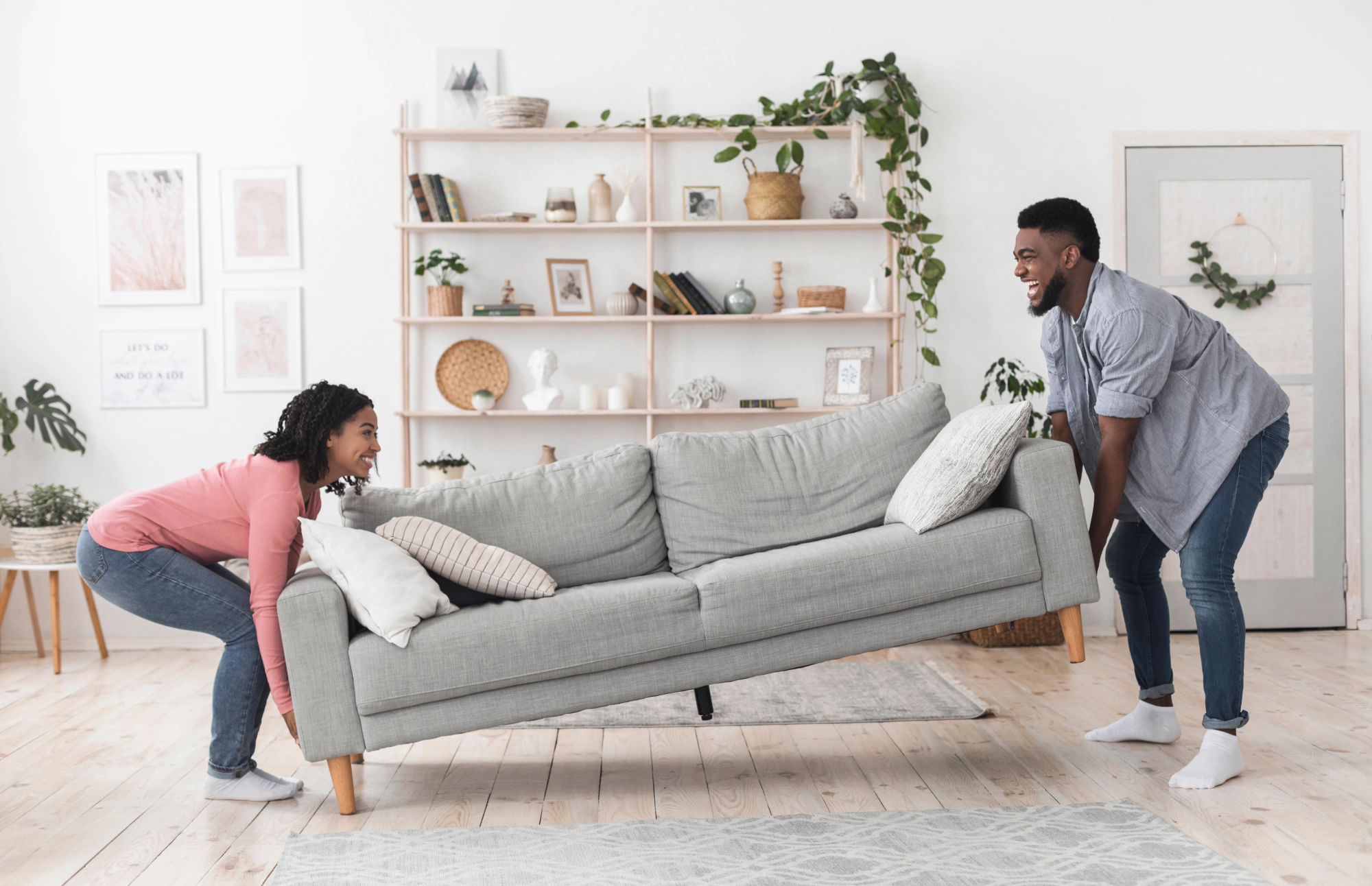The living room is a place for relaxing, entertaining guests and spending time with the family. The furniture in this space is used frequently, so it’s important to ask: How often should you buy new furniture for your living room? This depends on a number of factors including the quality and style of the furniture as well as the usage patterns. This comprehensive guide will help you decide if it’s the right time to update your living room.
1. Understanding Furniture Lifespan By Type
The lifespan of different pieces of furniture in the living room varies depending on their materials, workmanship, and how frequently they are used. The following is a general overview of the lifespan of common living room furnishings:
- Sofa: A sofa of high quality can last from 7 to 15 year. Some lower-quality sofas may start to show wear after just five years. Premium, well-maintained, premium-quality sofas, however, can last for over a decade.
- Armchairs and accent chairs: They can last anywhere from 7 to 10 year depending on the fabric and usage.
- Coffee and end tables: If handled carefully, wood tables can last up to 20 years. Glass or metal tables could last even longer.
- Entertainment centers and TV stands: These are durable, lasting 10 to 15 years. However, style changes may prompt an earlier replacement.
- Rugs can last between 5 and 10 years, depending on the material used and foot traffic.
2. Signs that it’s time to replace living room furniture
There are signs that your furniture is in need of an upgrade, even if it hasn’t yet reached its normal lifespan:
- Visible wear and tear: Sagging cushions and fabric, scratched surfaces and broken frames are signs that furniture has worn out.
- Lack of Comfort: Your posture and comfort could be affected if your sofas or chairs are no longer comfortable.
- Your taste in interior design may change with time. Modernize your home by updating furniture.
- Changing needs: A growing family or pets or a change in lifestyle may require additional seating, storage or child-friendly materials.
- If you can’t remove persistent stains or odors, replacing the carpet may be your best option.

3. Factors Influencing Replacement Frequency
How often you buy new furniture for your living room depends on several factors.
- The quality of the materials: Furniture made from solid wood, leather or premium fabrics will last longer than cheaper alternatives made out of particleboard and synthetic materials.
- Usage Habits : Furniture in an environment with high traffic, including children and pets, will wear out more quickly than furniture in a less busy home.
- Maintaining your furniture: Cleaning, rotating cushions and protecting surfaces will extend its lifespan.
- Budget and Priorities. If you are looking for pieces that will last, then investing in better-quality items can save you money over time. If you like to update your style often, you may choose more affordable items with shorter life spans.
4. Balance Style and Functionality
Style is important, but durability is also important when deciding whether to replace your living room furniture. Some people like to update their living room furniture every few years in order to reflect the latest trends.
Striking a balance between functionality and style:
- Choose timeless pieces: For larger items such as sofas and coffee table, choose classic designs in neutral colors. Accessories like throws, pillows, and artwork can be used to update the look of a room.
- Investing in quality furniture will not only make it last longer, but also maintain its appeal.
- Refresh and Don’t Replacing: A fresh coat of paint or new upholstery can give old furniture a new lease on life.
5. Eco-Friendly considerations
Furniture replacements are a major source of waste. Make more sustainable choices
- Buy durable pieces: By investing in quality furniture, you can reduce the need to replace it frequently.
- Repurpose or Donate. If your furniture is still in good condition but does not suit your style anymore, you can donate it to charity or use it for another space.
- Recycling furniture responsibly: If you are disposing of old furnishings, consider recycling to reduce the impact on landfills.

6. Budgeting for New Furniture
It can be an expensive investment to replace living room furniture. To budget effectively:
- Prioritize your needs: Start with the essentials, such as seating and storage, before you consider decorative items.
- Set aside Savings: Save for replacements each month by setting aside a little amount.
- Furniture is often sold at the lowest prices during major holidays and sales that end in season.
7. How often should you really replace your hose?
It’s impossible to say how often you should replace your living room furniture. Tables and entertainment units are more durable and can last for longer. However, it is recommended to replace primary furniture like sofas and chair every 7-10 years. The decision ultimately depends on your style, your furniture’s quality, and how much it is used.
You can create a stylish, functional and comfortable living room by balancing aesthetics and functionality.
This article was written by an expert at Miracle Furniture. Miracle Furniture can help you create beautiful and comfortable living spaces for your home in Tampa or St. Petersburg. We are proud to offer a carefully curated selection of high-quality furnishings and decor that will suit any style. From timeless classics to sleek, modern designs. Our wide range of furniture and decor is designed to suit any budget. Our team of friendly and knowledgeable Interior Decorator Tampa FL will help you find pieces to enhance your everyday life. Come to our showroom and let us transform your home into the dream home you’ve always wanted.


